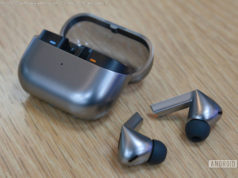A startup called InVisage has developed new image sensor technology that could help with core parts of Apple’s most important product.
Competitors like Samsung and Google may have caught up to Apple when it comes to mobile-phone photography, but iPhones might reclaim their lead if a startup acquisition works out.
Apple bought InVisage, a company developing image sensor technology called QuantumFilm that could outdo traditional image sensors from giants like Sony. Apple confirmed the acquisition to TechCrunch on Thursday.
QuantumFilm, which relies on tiny specks called quantum dots, offers three big advantages, InVisage chief executive and co-founder Jess Lee said in a 2015 interview at the company’s Menlo Park, California, headquarters.
A circular wafer of InVisage image sensor chips reflects light — but not as much, since the sensors‘ „quantum dots“ absorb light better than conventional silicon-based microchip sensors.
First, he expects images will capture a better range of bright and dark than what’s captured by the small sensors currently used in phones. Second, quantum dots aren’t as susceptible to the „Jello wobble“ effect that mars video showing moving subjects or that’s taken with a moving camera. Third, quantum dot sensors could be smaller, making it possible to avoid the bump of the protruding camera module found on the otherwise smooth back of phones like the iPhone X and the Google Pixel 2.
QuantumFilm also could potentially help Apple with the front-facing sensor package iPhones use for Face ID. Those sensors illuminate faces with infrared light to authenticate customers wanting to use an iPhone X. InVisage thinks its infrared image sensors can be smaller and more sensitive than conventional models.
Apple didn’t respond to a request for comment.
Does the Mac still matter? Apple execs explain why the MacBook Pro was over four years in the making, and why we should care.






